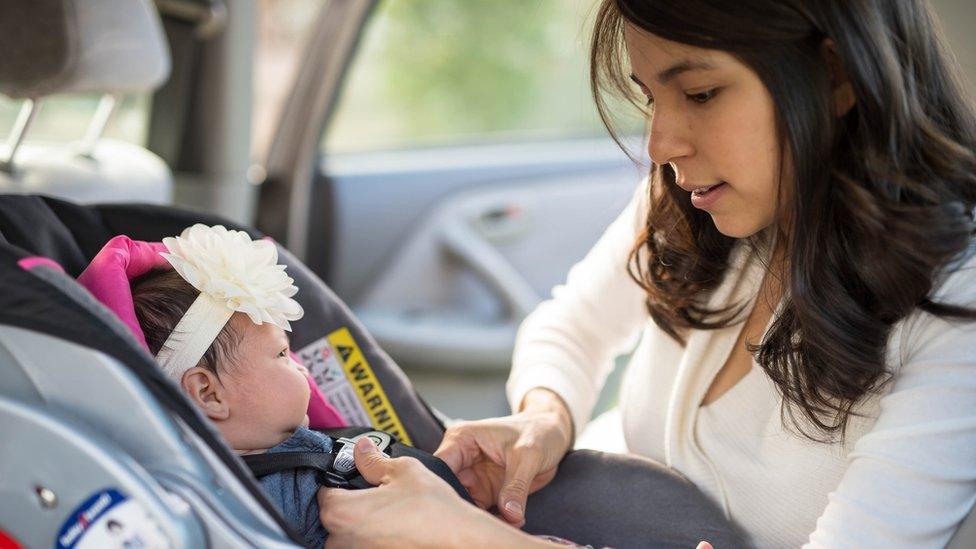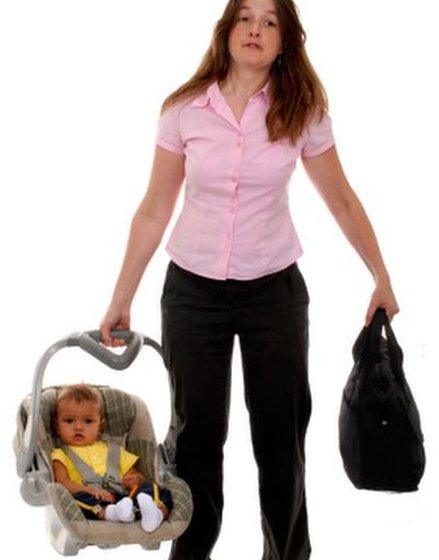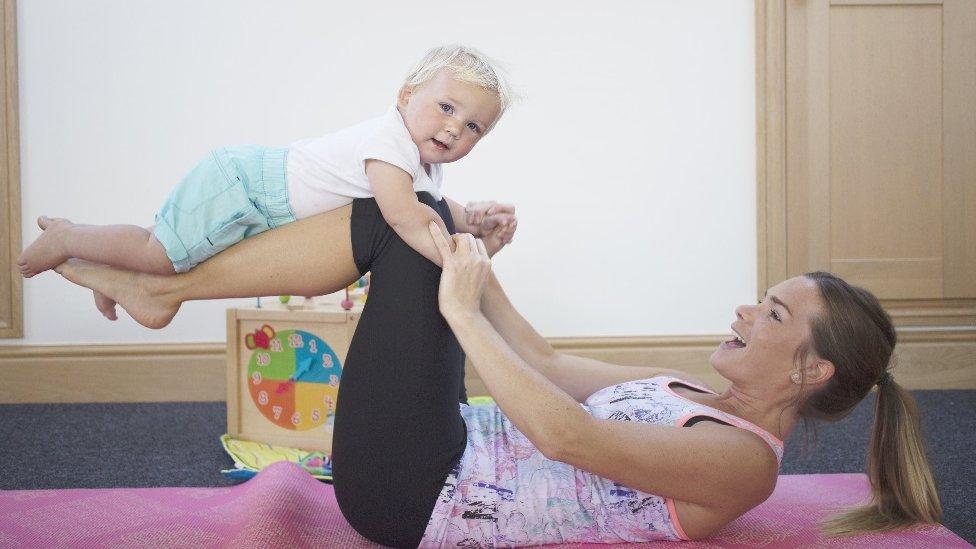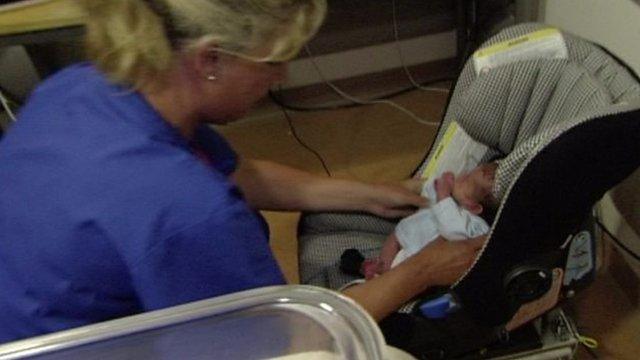Carrying baby car seats could injure new mums, experts warn
- Published
- comments

Lifting your baby in its car seat can cause pelvic organs to be displaced in some women, experts warn
New mothers are being warned lifting and carrying baby car seats can put their postnatal recovery at risk.
First-stage seats are heavy and awkward for women left vulnerable after giving birth and can cause or worsen pelvic organ prolapse, external, physiotherapists said.
Nelly Brewer, 32, said she "thought her life was over" when she suffered a bladder prolapse after carrying her baby in his car seat.
Manufacturers said they were limited on design and weight by regulations.
Cornwall physiotherapist Laura Cullen warned seats should ideally not be removed from the car in at least the first six to eight weeks after birth.
The Professional Network of Pelvic, Obstetric and Gynaecological Physiotherapy (POGP) said the seats were not well designed for carrying.
What is the problem?

Carrying and lifting a car seat can cause too much strain for some, experts said
Amanda Savage, from POGP, said the seats were "not well designed to be a way of moving a baby around".
"You're carrying a heavy weight off to one side far away from your body often with your hand turned backwards or forwards and that's not a comfortable or ergonomic way to carry something."
Ms Savage added women were "very, very vulnerable in those first few weeks" and they should be lifting as little as possible and strengthening support muscles.
POGP advised putting a car seat on a lightweight frame with wheels and to use the car's Isofix fittings, external if possible to minimise twisting.
You may also be interested in:
'It was horrendous'

Nelly Brewer says she suffered a bladder prolapse after lifting her baby in his car seat
Nelly Brewer from the Forest of Dean suffered a bladder prolapse three years ago when she lifted her baby's car seat for the first time, three weeks after giving birth.
"I carried the car seat into the health visitors, ironically, and after that I felt a weird sensation," she said.
The civil servant, who was 29 at the time, discovered the front wall of her vagina had collapsed.
"It was horrendous - I thought my life was over.
"I had had this vision that I would be going for long walks with my baby in the sling but then I couldn't even stand for five minutes without being uncomfortable."
She improved after an exercise regime.
How to avoid injury

Laura Cullen, specialist physiotherapist, said car seats should stay in the car
Laura Cullen runs Fit Bumps and Mums women's health physiotherapy in Newquay, Cornwall, and says women need to know the risks associated with lifting.
"Some women breeze through birth and are absolutely fine and able to be very active quite quickly postpartum, whilst others need much longer," she said.
"I recommend car seats are predominantly used in the car and not used as a carrying device," the mother of two said.
She said a sling could be used to transport babies to and from the car, adding: "As and when you do lift the car seat try to keep it as close to your body as possible and avoid any extreme twisting."
What are manufacturers doing?

Manufacturers said parents' wellbeing was "high on their agenda"
Luke Burns, of the Baby Products Association, said strict safety regulations hampered car seat design but "brands are always looking at solutions to provide greater ease of use for parents as well as to protect their wellbeing".
"Carbon fibre construction, which is extremely strong and lighter than most plastics, may be a possibility in the future, but it is extremely expensive and likely to make the manufacturing costs prohibitive and beyond the reach of most families."
Barbara Echevarria, managing director at Dorel which owns market leader Maxi Cosi, said the company hoped to launch a "revolutionary design" in 2020 which was "not only lighter, but would meet the highest standards of car seat safety and will alleviate the strain on parents' bodies".

What is a pelvic organ prolapse?
It is when one or more of the organs in the pelvis slip down from their normal position and bulge into the vagina
It happens when the group of muscles and tissues that support the pelvic organs, called the pelvic floor, becomes weakened
The chance of developing one is increased if you had a long, difficult birth, or if you gave birth to a large baby or multiple babies
It is believed many women suffer a small prolapse postpartum without knowing or noticing any problems. Severity is classified on a scale of 1 to 4
It can often be treated with pelvic floor exercises and lifestyle changes, but more severe cases can need surgery
- Published16 February 2019

- Published8 February 2017

- Published11 November 2016
